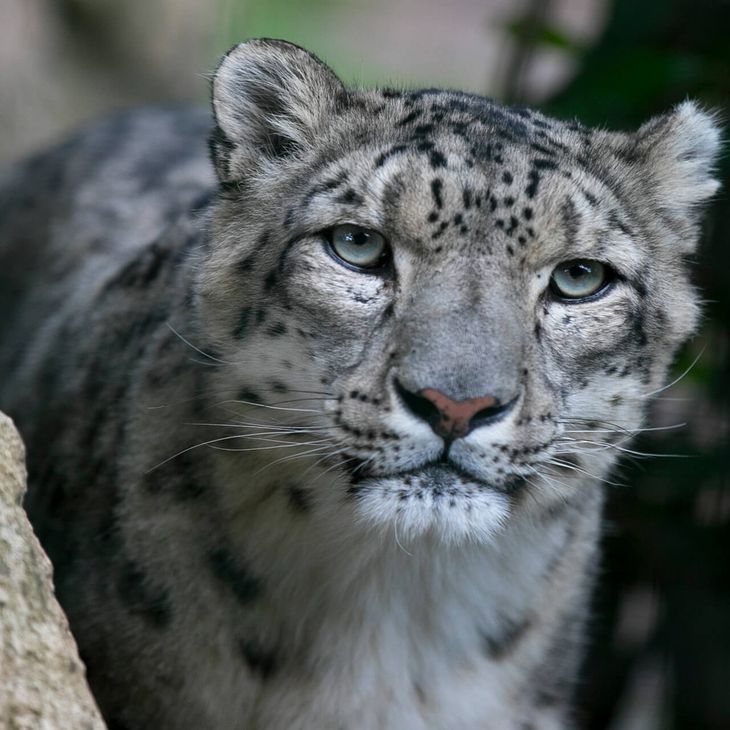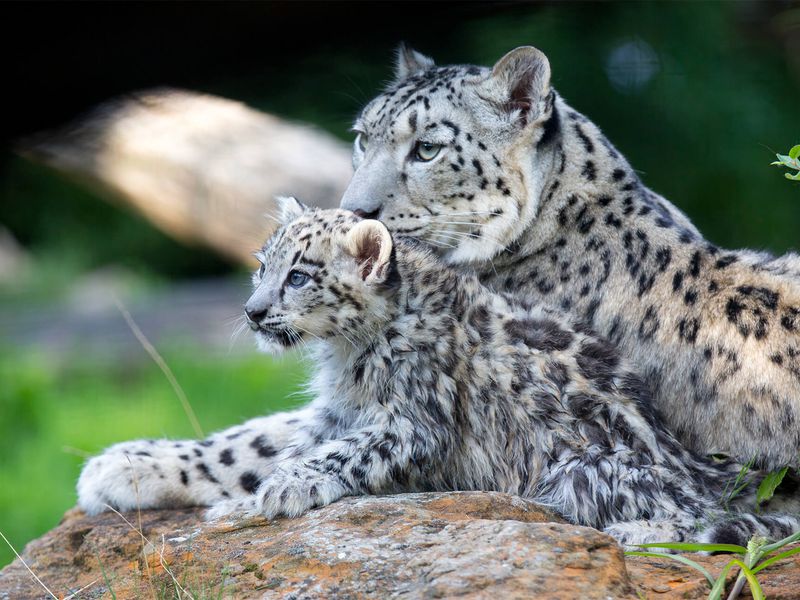« The snow leopard is more or less invisible until it makes a dash for its prey. »
A leopard for an eternal winter
Well-equipped for the cold!
As humans, it is hard to imagine an environment that is more unforgiving than an almost constantly snow-covered mountain, nearly 5,500 m above sea level. And yet, this environment is the perfect habitat for the snow leopard! With a range that reaches from Russia down to northern India, this big cat, sometimes called the ounce, occupies the largest mountain ranges in the world, such as the Himalayas. The snow leopard is highly adapted to the extreme weather that is prevalent in these areas. It has a thick coat and furry footpads, perfect for protecting itself from the cold and moving around in the snow.

Did you know?
Baby news! Snow leopard
The pitter patter of snow leopard paws outdoors…
“Un Œil en Coulisse” enters The Heights of China to focus its lens on two young snow leopards, Taiga and Saïan, who were born in 2015, and have since left for other zoos.
The Beauval Nature association
For the past 10 years, the Beauval Nature association has joined forces with field workers to support them in their primary mission of species conservation. Beauval works closely with numerous conservation and research programmes around the world to study and protect endangered species. This everyday action takes place in order to protect our biodiversity.



Sponsor our snow leopards
Establish a strong bond with your favourite animal whilst supporting conservation programmes through the Beauval Nature association!
Vulnerable
Learn more about the species
-
CarnivoreDiet
-
3½ monthsGestation period
-
1 to 5 youngLitter size
-
MountainsHabitat
The king of the mountains
An agile, secretive hunter
Rarely observed reproductive behaviour

Take full advantage of the experience thanks to our mobile application!
Find out more












